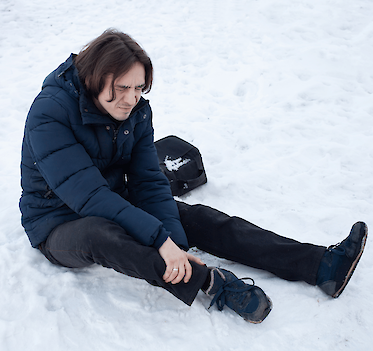Transforming Winter Hazards into Strategic Safety Practices for Your Workforce
Winter Work Safety: A Comprehensive Guide to Prevent Slips and Falls
As the winter chill sets in, workplaces become battlegrounds for potential hazards, with slips and falls taking center stage. Safety in winter isn't just common sense; it's a strategic system every business must have. Take charge of risk management this season with actionable steps designed to keep your workforce standing strong.
Why Snow and Ice Are Top Safety Concerns
Seemingly minor slips and slides in the snow can lead to major repercussions. In 2019, they accounted for 27% of non-fatal job injuries. Visibility restrictions and cold-related health threats compound the risks, especially for outdoor workers and those dealing with snow removal.
Step One: Clear the Path to Safety
For Employers and Safety Managers:
- Schedule regular snow clearing and de-icing activities.
- Post clear accessibility route maps.
For Workers:
- Wear appropriate non-slip footwear.
- Take shorter, slower steps on icy or snowy surfaces.
Step Two: Visibility and Vehicles
Reduced visibility from snowstorms increases the danger of vehicle and machinery accidents.
For Employers and Safety Managers:
- Equip and maintain clear visibility markings in high-traffic areas.
- Provide comprehensive training for workers operating vehicles.
For Workers:
- Use vehicle lights and signals to increase visibility.
- Approach machinery with caution, especially in low visibility.
Step Three: Cold Stress Safety
Prolonged exposure to cold can lead to serious health issues.
For Employers and Safety Managers:
- Provide proper insulated protective gear.
- Schedule regular warm-up breaks for outdoor workers.
For Workers:
- Learn the early signs of hypothermia and frostbite.
- Take cold exposure seriously, and report any health concerns immediately.
Step Four: Snow Removers’ Special Risks
Those in snow removal and maintenance face additional hazards.
For Employers and Safety Managers:
- Organize and train snow removal teams.
- Maintain and routinely inspect snow removal equipment.
For Workers:
- Adhere to safe snow removal practices and techniques.
- Never leave equipment unsupervised, especially on elevated surfaces.
Step Five: Communication is Key
An informed workforce is a safe workforce.
For Employers and Safety Managers:
- Establish a clear snow safety protocol.
- Communicate consistently with workers about weather changes and action plans.
For Workers:
- Be alert for and responsive to management's safety communication.
- Express any safety concerns to a supervisor.
Is your company's winter safety protocol as air-tight as it should be? Don't risk it. Healthcare Express Occupational Medicine is your one-stop resource for crafting and implementing solid winter safety strategies. Get a free business safety assessment here and transform your winter workplace into a safe haven
